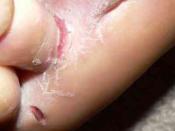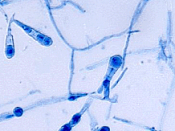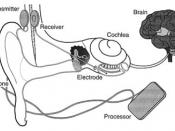Al Faisal College
H.S.C ASSESSMENT TASK NOTICE 4
Faculty: Science
Course: Biology
Task number: 4
Weighting: 25%.
Task description: Research task
Component / mode: 9.4 The Search For Better Health Option Communication
NAME: RABEH SALMA
PART 1 INFECTIOUS DISEASEs - Tinea pedis.
Between the toes the environment is rather moist, warm and poorly ventilated, this consequently results in the optimum requirements for the fungi to live and reproduce (Tinea Pedis, 2005-2006). Tinea pedis is caused by several different fungi including yeasts. Though, the most common fungi causing Tinea pedis are Trichophyton rubrum ,T. mentagrophytes and Epidermophyton floccosum (Alternative Medicine Encyclopedia, 2005).
HOST
The host of the disease Tinea pedis is human's dead skin on the foot (Excerpt from Tinea Pedis, 1996-2006). Likewise, animals such as kittens, mice, dogs etc (Ringworm or tinea, 2008).
Mode of transmission
Tinea pedis is mildly contagious; it can be spread directly or indirectly either human to human contact or animal to animal contact (Tinea pedis, 2005-2006).
However, the fungi are able to distribute themselves within pools, contaminated soils, locker rooms etc, and when people or animals come in contact with these area's the fungi quickly activates and multiplies, thus spreading indirectly (Ringworm or tinea, 2008). Moreover, the disease is capable of diversifying its spread by human to animal contact and vice versa (Alternative Medicine Encyclopedia, 2005).
Symptoms
HOST RESPONSE
There are two...


